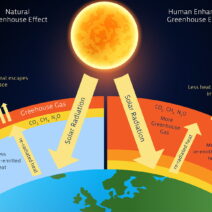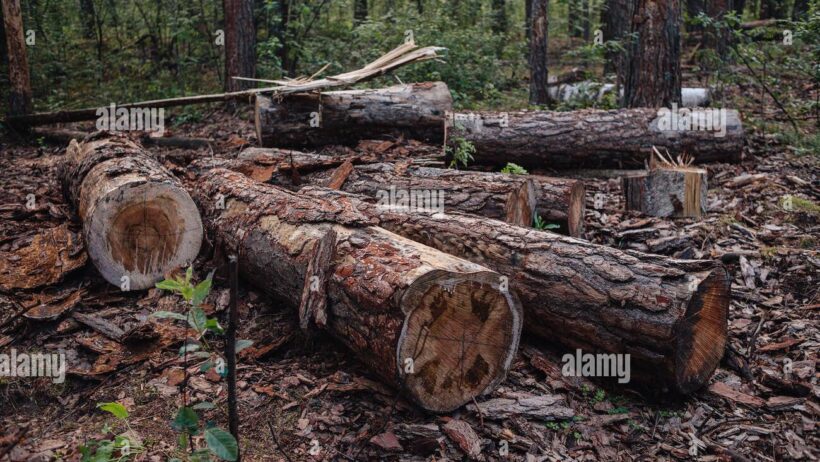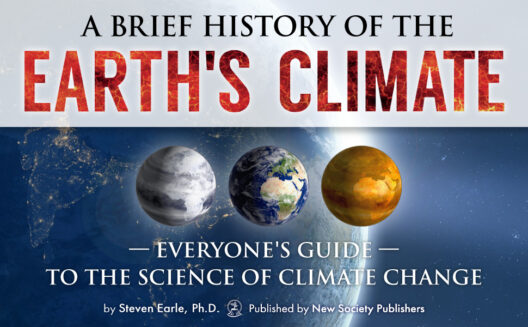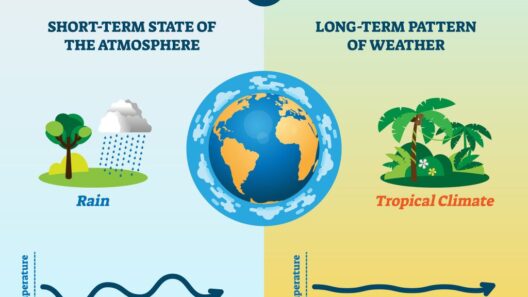Every time we step outside and take a deep breath, we are reminded of the forests that grace our planet. Yet, as we navigate through urban jungles constructed of concrete and glass, we might ponder: What if our very actions dismantle the lungs of the Earth? The act of cutting trees, known as deforestation, directly influences our climate in ways that are often overlooked. This article seeks to illuminate the intricate relationship between deforestation and climate change, revealing how a simple act can have monumental repercussions.
Deforestation, in its essence, refers to the large-scale removal of trees from forested areas. This practice, often driven by agricultural expansion, urban sprawl, and timber extraction, precipitates a cascade of environmental challenges. Unfortunately, it is not merely an ecological concern; it is an existential threat to our climate systems.
At a fundamental level, trees play a critical role in the Earth’s carbon cycle. Through the process of photosynthesis, trees absorb carbon dioxide (CO2) and release oxygen. This natural mechanism significantly mitigates the greenhouse gases in our atmosphere. When they are felled, not only is this carbon storage capacity lost, but the stored carbon is also released back into the atmosphere, exacerbating climate change. A playful question arises: What would happen if we considered trees as carbon banks? Each one we cut down could potentially be a withdrawal that incrementally drives our planet towards environmental bankruptcy.
Why does this matter? The relationship between deforestation and increased greenhouse gas emissions is stark. Deforestation accounts for approximately 10% of global CO2 emissions. When forests are cleared, large quantities of carbon are released through both the burning of trees and the decomposition of vegetation left behind. This sudden influx of carbon into the atmosphere accelerates the greenhouse effect, leading to a rise in global temperatures. As more trees vanish, the repercussions intensify, creating a feedback loop that poses a dire challenge to our climate systems.
The impacts of climate change—droughts, floods, and extreme weather events—become more pronounced as forested areas diminish. Rainforests, for example, are vital for maintaining regional weather patterns. Their removal alters rainfall distributions, resulting in prolonged dry spells or torrential downpours. Imagine a landscape where trees once stood, replaced by barren land that can no longer support life. One must consider: as we sever these vital connections, do we risk not only the climate but also our very survival?
Furthermore, the loss of trees contributes to the phenomenon known as ‘albedo effect.’ This term refers to the reflectivity of the Earth’s surface. Forests have a low albedo, meaning they absorb sunlight, which helps to regulate the planet’s temperature. When forests are cleared, the exposed land—often covered in bare soil or reflective surfaces—has a higher albedo, resulting in more heat absorption and further contributing to climate warming. This complex interplay highlights the importance of maintaining forest ecosystems in mitigating temperature increases. As we ponder the consequences, the challenge becomes clear: how can we innovate modern practices to protect our remaining forests?
Moreover, deforestation disrupts local ecosystems, which can have cascading effects on biodiversity. Forests are home to countless species that contribute to ecological balance. When trees are removed, not only do species lose their habitats, but entire food webs can be destabilized. The loss of biodiversity further diminishes resilience against climate change. The challenge, then, lies in fostering an environment where both human and ecological systems can thrive. What strategies can we adopt to restore these ecosystems?
One potential solution is the reforestation and afforestation initiatives aimed at restoring forest cover. These projects serve dual purposes: capturing CO2 and rehabilitating ecosystems. By planting trees, we can reinvigorate local habitats and ultimately help stabilize the climate. Communities around the globe must recognize that the fight against deforestation is not purely ecological but a multidimensional challenge that encompasses socio-economic factors as well. Education and awareness can empower individuals to advocate for policies that prioritize sustainable land use.
Technological advancements also hold promise in addressing deforestation. Innovations such as satellite monitoring and drones facilitate real-time observation of forest extents, allowing for swift responses to illegal logging activities. Blockchain technology can enhance transparency in supply chains, ensuring that products derived from forests are sourced sustainably. Yet, even with these advancements, the question remains: will these efforts be enough to halt the tide of deforestation?
In conclusion, the act of cutting down trees is not merely a localized issue but a global concern that reverberates through our climate systems. The intricate links between deforestation and climate change necessitate an urgent collective response. Recognizing the gravity of this predicament challenges us to rethink our relationship with nature. As we face the monumental task of curbing deforestation, the onus lies upon each of us to advocate for sustainable practices, reforestation efforts, and innovative solutions. Can we rally together to protect our planet’s lungs and, in doing so, safeguard our future? The challenge is formidable, but the stakes have never been higher.






